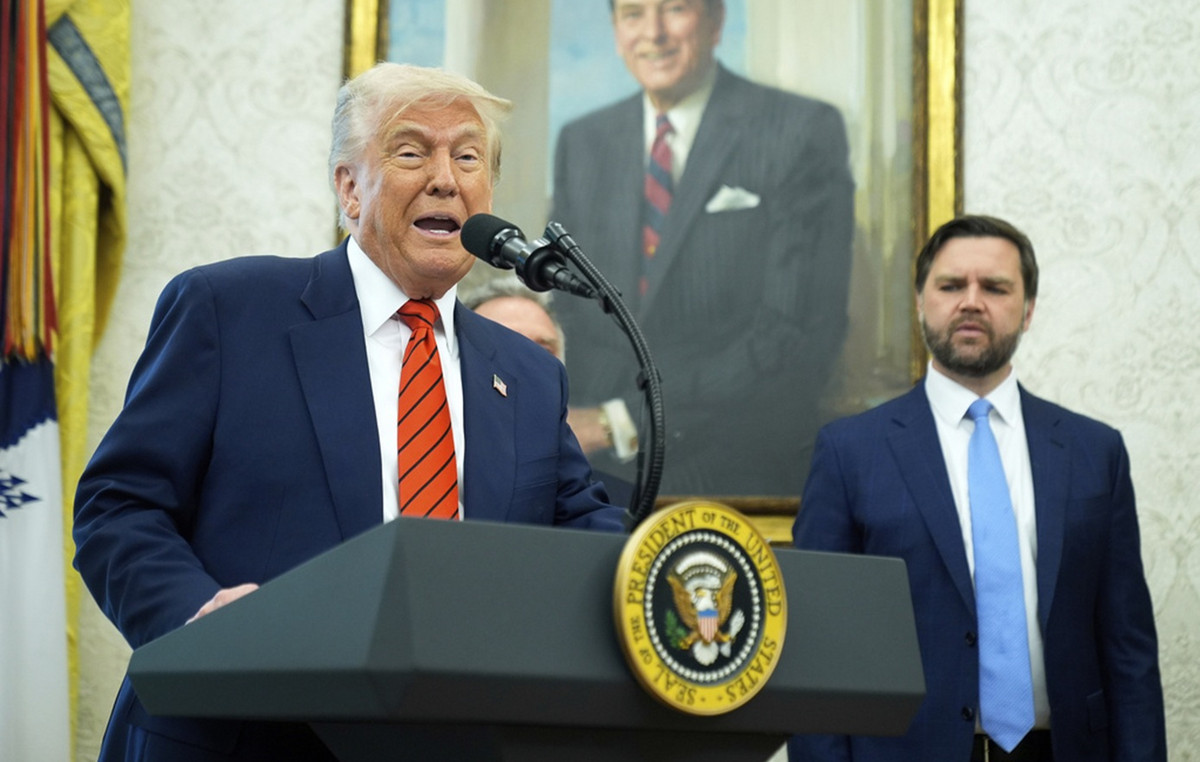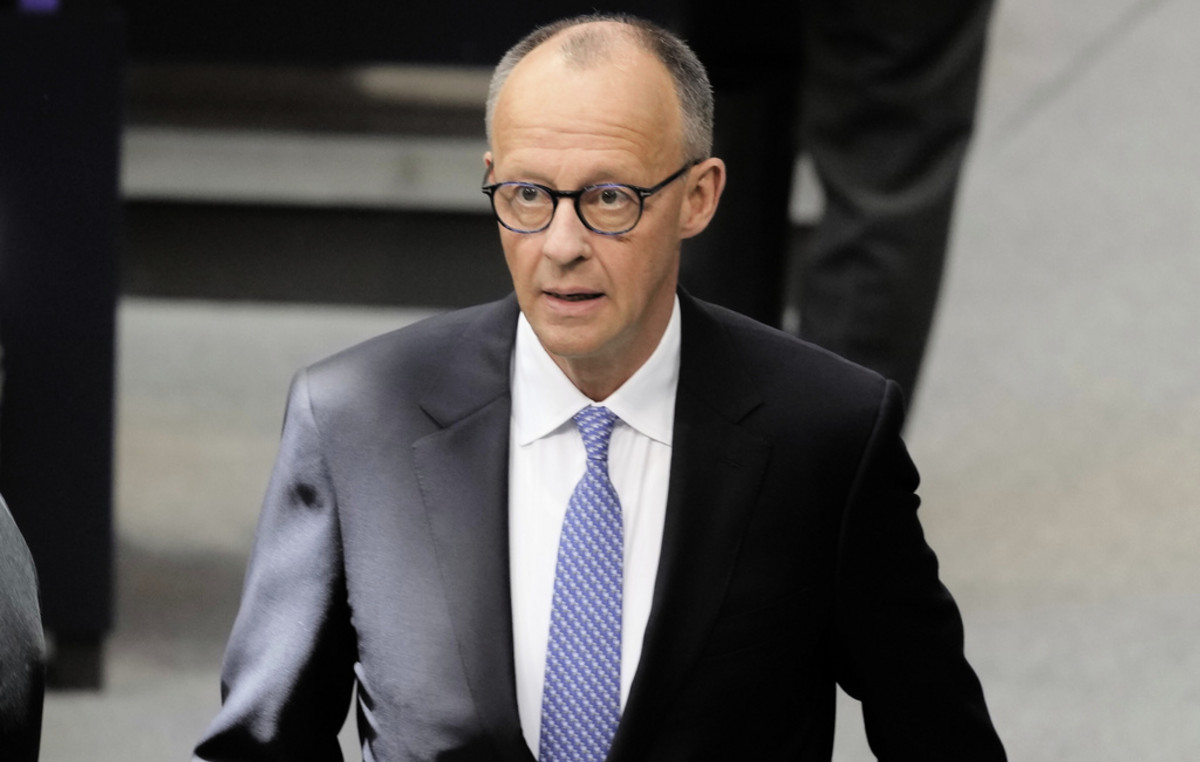False: It is false that the government of Bahia received ambulances from the federal government and signaled the vehicles only with symbols of state management for electoral reasons, as stated in a video that went viral on TikTok. According to the State Health Department, the vehicles were purchased with their own resources and amendments from parliamentarians from Bahia.
Verified Content: Video shows ambulances, vans and minibuses in the parking lot of the Bahia State Health Department (Sesab); man claims that vehicles were purchased by the federal government and that the government of Bahia put its own logo and hid the ambulances to deliver during electoral periods.
Where it was published: on TikTok
Completion of the Test: It is false that vans and ambulances parked in front of the Health Department of the State of Bahia (Sesab) have been purchased by the federal government and are being hidden by state management so that they can be delivered during the election period. The vehicles have the logo of the Unified Health System (SUS) and the Government of the State of Bahia and appear in a viral video posted first on Facebook, on March 7, 2022, and then on TikTok. When showing the vehicles, the man who narrates the images lies when he says that the equipment, because they belong to the SUS, were purchased by the government of Jair Bolsonaro (PL).
The images were actually taken in the Sesab parking lot, which is located in the Bahia Administrative Center (CAB), in Salvador. In addition to ambulances, vans and minibuses also appear with the visual identity of polyclinics. The vehicles have the Bahia government logo because they were purchased with funds from the state treasury, in addition to parliamentary amendments by federal and state deputies of Bahia, according to Sesab.
In addition, the fact that ambulances have the SUS logo does not necessarily mean that they were purchased by the federal government. The 1988 Constitution determines that investments in the Unified Health System be made with resources “from social security, the Union, the States, the Federal District and the Municipalities, in addition to other sources”.
False, for Comprova, is content invented or edited to change its original meaning and deliberately disclosed to spread a falsehood.
What the author of the publication says: The author of the video, who identifies himself as Ernando Peixoto, was contacted, but did not respond until the publication of this text.
How we check: In the video that went viral on TikTok, the man who films the ambulances says his name is Ernando Peixoto. From a search for his name, we were able to find a lot of information about him, including previous checks by checking agencies. On the author’s social networks, we did a search for the term ambulances and found several videos he made with a content similar to that verified by Comprova.
To check the statements in the video, we contacted the Bahia Department of Health and the Ministry of Health. We also searched official sources to understand how the SUS funding works and how other states put stickers on ambulances acquired by the state government.
Ambulances were purchased by the government of Bahia
The ambulances, vans and minibuses that appear in the images taken in the Sesab parking lot, in Salvador, do not have a federal government logo because they were not purchased by the Federal Government, but by the state of Bahia. By email, Sesab reported that “the ambulances that appear in the video are acquired by the State Health Department with resources from the state treasury, resources from parliamentary amendments intended by federal deputies from Bahia and also with resources from parliamentary amendments from state deputies” . In the case of funds from federal amendments that came out of the Union Budget, the decision to allocate this money came from parliamentarians, not from the federal government, which was not responsible for the purchase, as the video suggests.
In addition to ambulances, there are vans and minibuses in the images. In the case of vans, they will be used for the sanitary transport of patients who will be treated at the Regional Health Polyclinics. Like the minibuses, they continue in the folder’s parking lot and will be destined for the municipalities as the polyclinics that are under construction are delivered. There are currently 21 polyclinics in operation and three under construction, in the cities of Ilhéus, Santa Maria da Vitória and São Francisco do Conde.
This year alone, the state government delivered 126 van-type ambulances, like the ones shown in the images, to municipalities in Bahia. Each one cost R$ 205 thousand, totaling an investment of R$ 25.8 million. There were three large shipments, with a delivery of 28 ambulances in January, another of 31 in February and another of 42 on March 7, the same day the video was posted on the author’s Facebook account. Another 25 ambulances were delivered punctually in municipalities in Bahia.
Comprova asked the Ministry of Health if ambulances were purchased and sent this year to Bahia, what are the requirements for standardizing vehicles of this type and who can use the SUS logo on their vehicles. The folder did not respond if it sent vehicles to Bahia and limited itself to informing that there is a specific visual standardization for SAMU 192 vehicles – which is not the case of those shown in the video – and that SUS is tripartite. “Therefore, the SUS logo belongs to the municipal, state and Federal spheres, and may or may not involve federal resources, or even resources from more than one sphere of management”, says a note.
Vehicles are not hidden
In the video, the author states that the ambulances were hidden by the government of Bahia to be delivered during the election period. Without specifying an exact number, Sesab reported that most of the ambulances that appear in the images have already been delivered. In addition to the vans and minibuses, at least seven ambulances were filmed.
Furthermore, it is unreasonable to claim that they are hidden. In the background of the video, it is possible to see a yellow building, the headquarters of Sesab, which is located on 4th Avenue of the Administrative Center of Bahia, in Salvador. The place is open and can be accessed by anyone, as even public transport buses circulate through the CAB.
In a note, Sesab informed that the vehicles stay in the parking lot “only the time necessary for the licensing/placing procedures to be carried out with the transit agency”.
What is SUS and who finances it?
An argument used by the man who narrates the images is that the ambulances have the SUS logo – therefore, the vehicles would have to have been purchased by the federal government. But that’s not true. The Unified Health System was created by the Federal Constitution of 1988 as a tripartite regime, which means that the Union, states and municipalities are joint managers of the system, each with its own functions. The three levels are responsible for funding the SUS, as determined by article 198 of the Constitution.
By Complementary Law 141/12, state governments must invest in the SUS at least 15% of what they collect. For municipalities, this minimum percentage is 12%. In the case of the federal government, the account is a little more complex. The Union must apply the same amount spent in the previous year plus the nominal variation of the Gross Domestic Product (GDP). In years when GDP is negative, however, the amount spent on health in the previous year cannot be reduced.
The Ministry of Health claims to be responsible for half of the money invested in public health in Brazil, with the other half split between states and municipalities. In addition to financing health, the Union has the function of creating national public policies for the sector, elaborating norms and carrying out strategic health planning. The execution of these actions is carried out, at the end, by the state and municipal health departments.
During the pandemic, in 2020, state spending on health grew at a rate greater than twice the rate of increase in current revenues.
Visual identity standard
Comprova searched for a visual identity pattern in ambulances and found, on federal government websites, only models for plotting (signaling using drawings and lines) of ambulances from the Mobile Emergency Care Service (SAMU). In these, the name of the Ministry of Health and also the logo of the federal government appears, as these images of ambulances in Santa Catarina show.
This is not the case with common ambulances used in states and municipalities. In addition to the ambulances in Bahia, those in states such as São Paulo, Rio de Janeiro, Minas Gerais and Amazonas do not have a logo from the federal government, but from their state governments and SUS.
Who is the author of the video?
The author of the video verified here identifies himself at the end of the recording as Ernando Peixoto. He was a candidate in six elections in Bahia, most of them for councilor in Salvador, but he was never elected. It is not the first time that he has spread disinformation on the networks about health services: in 2020, Agência Lupa showed that another video in which Peixoto claimed that ambulances sent by the federal government had not been delivered to municipalities by the Bahian government was false – the ambulances , in fact, had not been purchased by the federal government.
He has already been prosecuted by the government of Bahia because he would have been the author of false content that President Jair Bolsonaro forwarded, in April 2020, to the then Minister of Justice Sergio Moro. In the video, recorded in front of the Spanish Hospital, in Salvador, he made a link between the National Institute of Technology and Health (INTS), which started to manage the hospital during the pandemic, and Senator Otto Alencar (PSD).
Peixoto has also been checked before by Comprova. In September 2020, the same man posted a video on his social media in which he begged to access Porto da Barra, one of the most frequented beaches in Salvador, which, at that time, still had access blocked for bathers due to the pandemic. Other nearby beaches, however, had already been granted access.
why do we investigate: Comprova checks suspicious content that has gone viral on social media about the 2022 elections, public policies of the federal government and the covid-19 pandemic. Checking content about the election is important to prevent voters from making a voting decision influenced by false information, which is harmful to democracy.
Scope of publication: The verified video had over 9,400 interactions on TikTok.
Other checks on the topic: Recently, Comprova published several checks on videos dealing with Brazilian elections or pre-candidates. Publications proved to be false that an American presenter laughed at Brazilian electoral research; the comparison between community houses in Rio Grande do Norte attributed to Bolsonaro and former president Lula is misleading; and that videos of Russian President Vladimir Putin’s attacks on Bolsonaro were humorous.
Investigated by Jornal do Comércio and Estadão. Verified by Metrópoles, CBN Cuiabá, CNN Brasil, Correio Braziliense, SBT, SBT News, Plural, O Dia, Nexo and NSC Comunicação
Source: CNN Brasil







